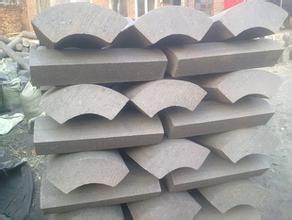 Understanding the Importance and Applications of Graphite Electrode Scrap
Understanding the Importance and Applications of Graphite Electrode Scrap
Graphite electrode scrap refers to the waste material that is generated during the production and use of graphite electrodes. These graphite electrodes are an essential component in electric arc furnaces, widely used in the steel-making industry. The scrap is generated as a result of electrode breakage, consumption, or end-of-life disposal.
1. Composition and Characteristics of Graphite Electrode Scrap
Graphite electrode scrap primarily consists of graphite material and metallic impurities, which may include steel, copper, or aluminum. The scrap's composition depends on the electrode type, manufacturing process, and furnace conditions.
The characteristics of graphite electrode scrap include its high carbon content, potential traces of impurities, and varying physical properties depending on the specific electrode grade and usage. The carbon content of the scrap makes it a valuable source for carbon and energy recovery.
2. Recycling and Environmental Benefits
Recycling graphite electrode scrap offers significant environmental benefits. Firstly, it reduces the demand for mining natural graphite, thus conserving natural resources. Secondly, the recycling process helps in minimizing waste disposal and its associated environmental impact.
Furthermore, by recovering carbon from the scrap, it can be diverted for use in various industries, such as steel, foundry, or carbon products manufacturing, reducing the dependency on fossil fuels and contributing to a more sustainable economy.
3. Recycling Process and Techniques
The recycling process of graphite electrode scrap involves several steps:
- Collection and Segregation: The scrap is collected from different sources, segregated based on composition and quality.
- Pretreatment: The scrap is prepared by removing any impurities, such as metal attachments or coatings, through mechanical or thermal treatment methods.
- Size Reduction: The scrap is crushed to a desired size to facilitate further processing.
- Carbon Recovery: Various techniques, including pyrometallurgical and hydrometallurgical methods, are employed to extract valuable carbon content from the scrap.
4. Importance of Quality Control
Quality control plays a crucial role in the recycling of graphite electrode scrap. It ensures that the recovered carbon meets the required specifications for its intended applications. Quality control measures include carbon content analysis, impurity characterization, and physical property assessment.
Optimum quality control ensures that the recycled carbon material is suitable for use in various industries, thereby promoting sustainability and resource efficiency.
5. Market Outlook and Future Trends
The market for graphite electrode scrap is expected to witness significant growth in the coming years. The increasing adoption of electric arc furnaces in the steel-making industry, coupled with strict environmental regulations, drives the demand for recycled carbon materials.
Moreover, advancements in recycling technologies, such as the development of efficient carbon recovery processes, are expected to further enhance the value proposition of graphite electrode scrap.
The use of graphite electrode scrap has the potential to contribute to a circular economy, reducing the reliance on virgin materials and minimizing waste generation. By adopting sustainable practices, industries can improve their environmental performance while simultaneously benefiting from cost savings.
In conclusion, graphite electrode scrap holds immense potential as a valuable resource for carbon recovery and recycling. Its proper management and utilization can contribute to a sustainable and resource-efficient future.
